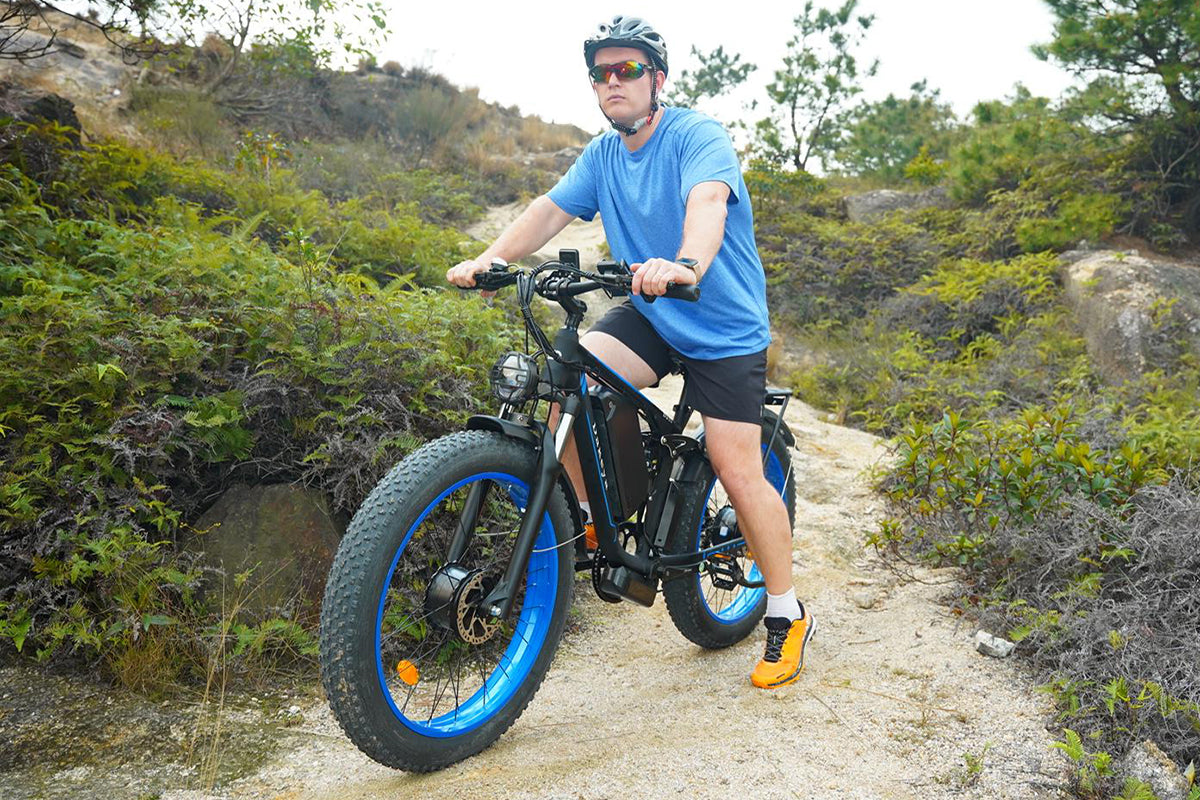Comparing Electric Mountain Bikes in the $2,000 Range

Electric mountain bikes (eMTBs) are becoming more capable and accessible.
If you're exploring options around the $2,000 budget, this guide explains which features matter most, how performance varies, and how to invest your money wisely.
We’ll review pedal-assist systems, speed limits, range, fat-tire designs, and key specs to compare before buying.
Why the $2,000 Range Matters
While high-end eMTBs often cost above $4,000, there are now strong models near $2,000 that offer reliable motors, good battery capacity, and versatile performance.
According to one buyer’s guide on eBikes under $2,000, bikes in this range typically provide 40–70 miles of range, durable frames, and mid-tier motors suited for mixed terrain.
This makes the category accessible for both commuters and trail riders who want quality without overspending.
So this budget is realistic for many riders, you just need to know how to judge what you’re getting.
Key Features to Compare
Pedal Assist & Motor Type
The pedal-assist system determines how much power the motor contributes while pedaling.
When comparing models, focus on:
-
Motor wattage (nominal and peak output)
-
Torque (how well it climbs)
-
Throttle availability (some bikes use assist only)
For example, most mid-range eMTBs use 500–1000W motors, which are adequate for city and trail use.
Instead of relying on claims like “fastest electric bike,” check the motor’s wattage and torque for a factual performance comparison.

Top speeds vary based on local regulations.
In many regions, Class 3 eBikes assist up to 28 mph (45 km/h).
If you see listings that claim 35–50 mph, verify whether this figure refers to assisted speed or manual pedaling only.
Bicycling.com – E-Bike Classes Explained
Battery Capacity & Range
Battery size is measured in watt-hours (Wh) and directly affects range.
For mixed-terrain rides, look for at least 1000–1500Wh.
Many $2,000-range bikes can reach 40–70 miles per charge depending on the rider’s weight and assist mode.
For instance, the Dakeya Nova X1 features a 1500Wh battery capable of 70–75 miles per charge under normal conditions.
Explore Dakeya’s long-range eMTBs
Gebbattery – eBike Battery Lifespan Study

Terrain & Tire Type
Tire width affects traction and ride comfort.
Fat-tire eBikes (3.5"–4") provide better stability on sand, gravel, or snow, while narrower tires perform better on paved trails.

The Dakeya TS60 Fat Tire Electric Bike uses 26" 4.0"-inch fat tires and a 5000W peak dual motor, combining comfort and grip for mixed-terrain riders.
Example Budget eMTBs to Consider
Here are some sample models that you can expect in this price range. (Note: these are sample models just for reference, you should check specs for your region.)
| Model | Motor (Peak) | Battery | Range | Price (USD) | Key Use |
|---|---|---|---|---|---|
| Dakeya Nova X1 | 6000W | 1500Wh | 70–75 mi | $1,499 | Long-range rides |
| Dakeya TS60 | 5000W | 1500Wh | 60–70 mi | $1,399 | Off-road, fat-tire |
| Dakeya MX500 | 4000W | 1300Wh | 60-65 mi | $1,299 | City & moderate trails |
| Heybike Alpha | 500W | 680Wh | 50–55 mi | $1,499 | City commuting |
| Mokwheel Basalt 2.0 | 1100W | 940Wh | 55–60 mi | $1,799 | Mixed-use commuter |
Comparing Two Typical Models Side by Side
If you’re choosing between two options, say, a 6000W fat-tire and a 5000W fat-tire eMTB, consider:
-
Acceleration & Climbing: The 6000W model handles hills more easily.
-
Handling: The 5000W model is lighter and better for flat roads.
-
Range: Similar batteries, but lower-power motors can last slightly longer.
-
Tires: Fat tires increase comfort but reduce efficiency on smooth terrain.
-
Value: Higher wattage improves power but adds cost and weight.
eBike Forum Discussion on $2000 Range Models
What to Check Before Buying
-
Regulations: Confirm eBike class limits in your region (speed/power).
-
Support & Warranty: Look for brands with local service partners.
-
Battery Brand: Verify Wh capacity and rated charge cycles.
-
Real vs Advertised Range: Expect 20% variation based on assist mode.
-
Intended Terrain: Match tire size and motor power to your environment.
-
Avoid Unsupported Superlatives: If a brand says “best” or “fastest,” check for data or third-party reviews to confirm.
Summary
If you're considering an electric mountain bike in the $2,000 range:
-
You can find balanced options offering strong performance and solid range.
-
Focus on measurable specs: motor wattage, battery Wh, suspension, and tire size.
-
Don’t choose by hype, choose by data and fit for your riding style.
-
Read user forums and reviews to see how real riders rate their experiences.
For example, Dakeya Nova X1 focuses on range and endurance, while the TS60 emphasizes power and off-road control.











Share:
Electric Mountain Bikes in 2025: Technology & Buying Insights